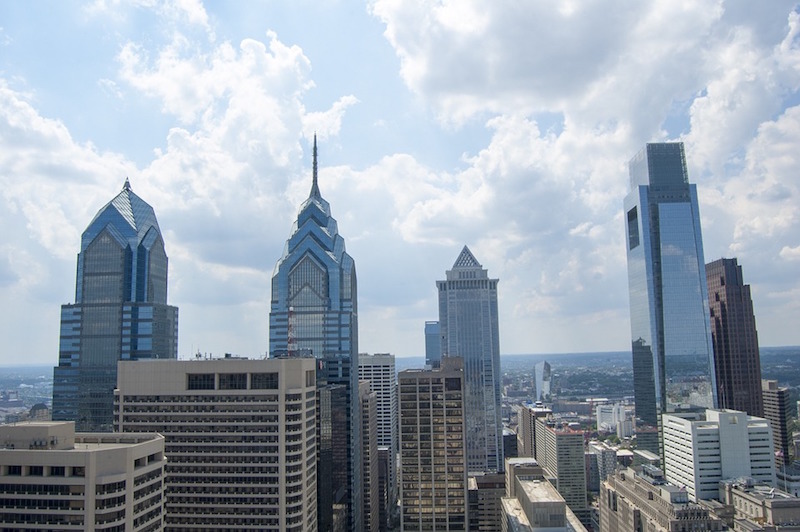Alan Greenberger, FAIA, former Philadelphia Deputy Mayor and Chairman of the City Planning Commission, has been selected to receive the 2017 Thomas Jefferson Award. The Thomas Jefferson Award recognizes excellence in architectural advocacy and achievement. Greenberger will be honored at the AIA Conference on Architecture 2017 in Orlando.
Lured from his role as a principal at Philadelphia’s MGA Partners by former Philadelphia Mayor Michael Nutter, Greenberger quickly assumed a dual role as deputy mayor and chairman of the City Planning Commission. Responsible for the Department of Commerce as well as oversight of planning and 10 additional agencies, Greenberger spearheaded an audacious initiative to rewrite the city’s antiquated and convoluted zoning code and create Philadelphia2035, a comprehensive plan for the city’s renaissance. During his tenure, he also completed and approved plans for all 37 miles of the city’s waterfront and led Philadelphia to its greatest redevelopment and population influx since the mid-20th century.
When the Nutter administration reached its two-term limit, Greenberger left full-time public office. He now shares his knowledge and wealth of experience with the next generation of design professionals as the Distinguished Teaching Professor and Lind Fellow in the Department of Architecture and Interiors at Drexel University. Later this year, he will assume the role of department head. Greenberger remains active with the city he helped become a UNESCO World Heritage site in 2015, serving as chairman of the Philadelphia Art Commission. An independent body, it is tasked with design oversight of all public facilities, signage, and artwork.
Related Stories
Multifamily Housing | May 19, 2016
Architect Jean Nouvel designs flood-resilient Monad Terrace in Miami Beach
A man-made lagoon with lush vegetation at the base of the complex is expected to adapt to climate change and rising sea levels.
Building Team Awards | May 19, 2016
Chinatown library unites and serves two emerging Chicago neighborhoods
The 16,000-sf, pebble-shaped Chinatown Branch Library was built at the intersection of new and old Chinatown neighborhoods. The goal is for the building to unite the communities and serve as a catalyst for the developing area.
Building Team Awards | May 19, 2016
NYC subway station lights the way for 300,000 riders a day
Fulton Center, which handles 85% of the riders coming to Lower Manhattan, is like no other station in the city’s vast underground transit web—and that’s a good thing.
Market Data | May 17, 2016
Modest growth for AIA’s Architecture Billings Index in April
The American Institute of Architects reported the April ABI score was 50.6, down from the mark of 51.9 in the previous month. This score still reflects an increase in design services.
Architects | May 16, 2016
AIA and HOK partner to advance Design and Health Research Consortium
The groups' key priority is to identify and develop practice-focused opportunities for funded research, publications, and tools in the area of design and public health.
Senior Living Design | May 16, 2016
Perkins Eastman releases white paper on biophilic design in senior living
The paper highlights some of the firm's top projects that feature biophilic design, a sustainable architecture strategy that connects people with nature.
Architects | May 16, 2016
3 strategies to creating environments that promote workplace engagement
VOA's Pablo Quintana writes that the industry is looking for ways to increase engagement through a mix of spaces suited to employees' desire for both privacy and connection.
Architects | May 11, 2016
AIA to create a resilience curriculum for architects
The program will teach resilient design and decision-making on hazard mitigation, climate adaptation and community resilience.
Retail Centers | May 10, 2016
5 factors guiding restaurant design
Restaurants are more than just places to eat. They are comprising town centers and playing into the future of brick-and-mortar retail.
AEC Tech | May 9, 2016
Is the nation’s grand tech boom really an innovation funk?
Despite popular belief, the country is not in a great age of technological and digital innovation, at least when compared to the last great innovation era (1870-1970).

















